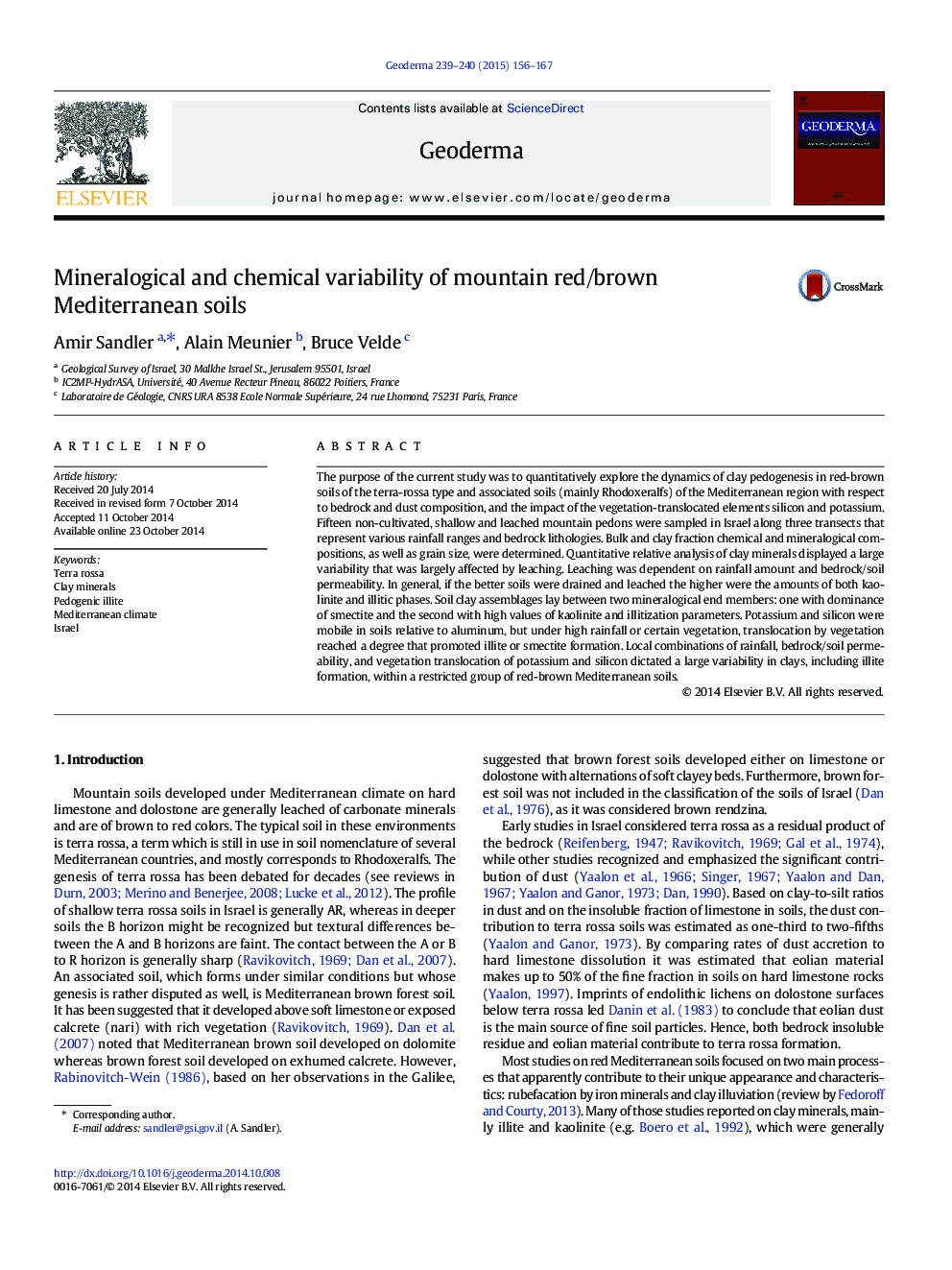| کد مقاله | کد نشریه | سال انتشار | مقاله انگلیسی | نسخه تمام متن |
|---|---|---|---|---|
| 6408655 | 1629466 | 2015 | 12 صفحه PDF | دانلود رایگان |
The purpose of the current study was to quantitatively explore the dynamics of clay pedogenesis in red-brown soils of the terra-rossa type and associated soils (mainly Rhodoxeralfs) of the Mediterranean region with respect to bedrock and dust composition, and the impact of the vegetation-translocated elements silicon and potassium. Fifteen non-cultivated, shallow and leached mountain pedons were sampled in Israel along three transects that represent various rainfall ranges and bedrock lithologies. Bulk and clay fraction chemical and mineralogical compositions, as well as grain size, were determined. Quantitative relative analysis of clay minerals displayed a large variability that was largely affected by leaching. Leaching was dependent on rainfall amount and bedrock/soil permeability. In general, if the better soils were drained and leached the higher were the amounts of both kaolinite and illitic phases. Soil clay assemblages lay between two mineralogical end members: one with dominance of smectite and the second with high values of kaolinite and illitization parameters. Potassium and silicon were mobile in soils relative to aluminum, but under high rainfall or certain vegetation, translocation by vegetation reached a degree that promoted illite or smectite formation. Local combinations of rainfall, bedrock/soil permeability, and vegetation translocation of potassium and silicon dictated a large variability in clays, including illite formation, within a restricted group of red-brown Mediterranean soils.
Journal: Geoderma - Volumes 239â240, February 2015, Pages 156-167
